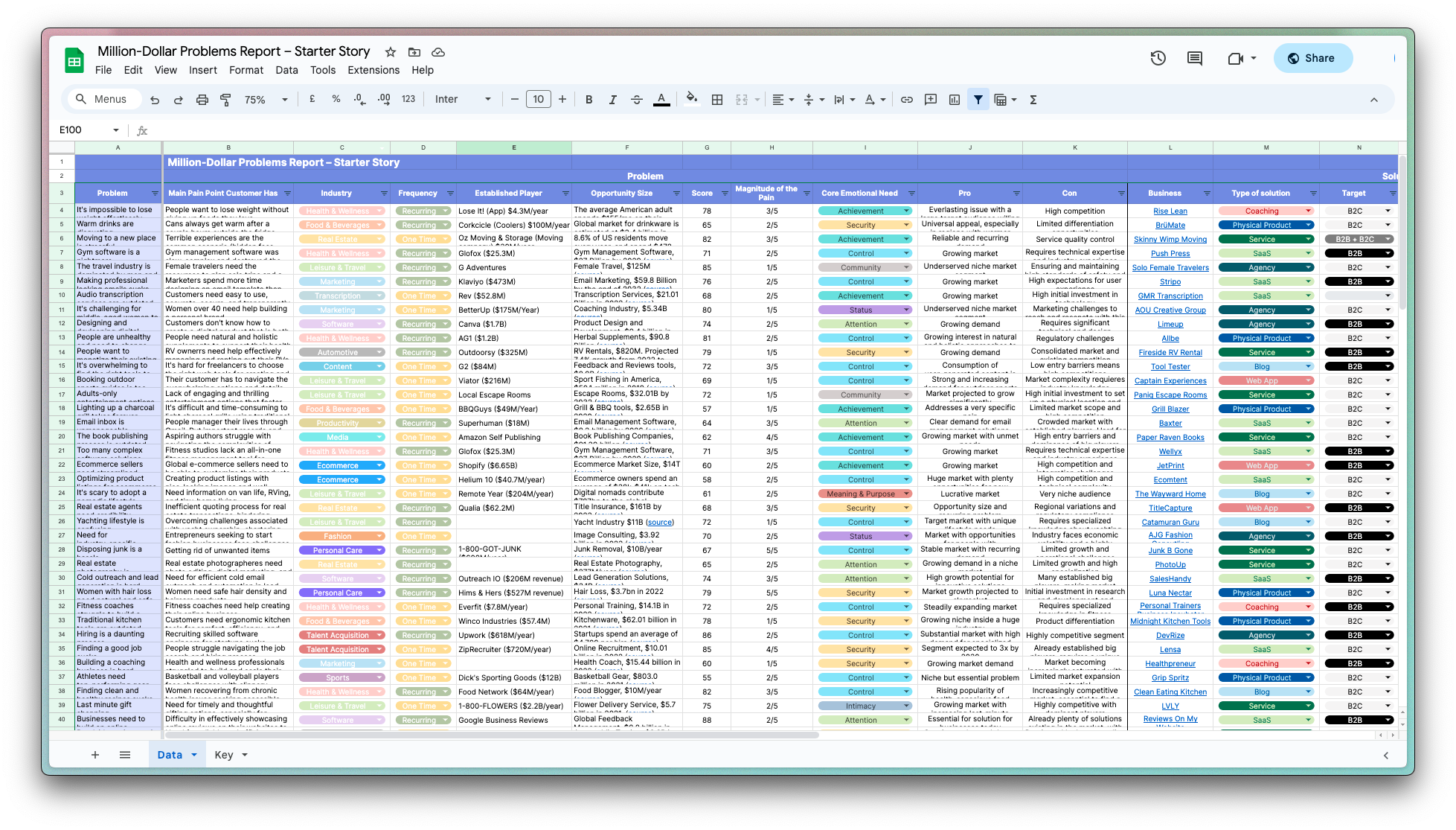|
|
"Shopify feedback tool for eCommerce insights."
|
|
|
$10K
monthly
|
75
days
|
—
per visitor
|
—
to start
|
65
out of 100
|
|
|
|
|
|
|
AI tool for generating LinkedIn content.
|
|
|
$33K
monthly
|
—
days
|
—
per visitor
|
—
to start
|
59
out of 100
|
|
|
|
|
|
|
SaaS for real estate agents' marketing content.
|
|
|
$10K
monthly
|
63
days
|
—
per visitor
|
$500
to start
|
72
out of 100
|
|
|
|
|
|
|
|
|
|
$8.33K
monthly
|
60
days
|
$8.33
per visitor
|
$50
to start
|
90
out of 100
|
|
|
|
|
|
|
|
|
|
$23K
monthly
|
30
days
|
—
per visitor
|
$196
to start
|
91
out of 100
|
|
|
|
|
|
|
|
|
|
$117K
monthly
|
—
days
|
—
per visitor
|
—
to start
|
72
out of 100
|
|
|
|
|
|
|
No-code platform for building web apps.
|
|
|
$60K
monthly
|
30
days
|
$0.09
per visitor
|
—
to start
|
57
out of 100
|
|
|
|
|
|
|
Unlimited design services on subscription.
|
|
|
$145K
monthly
|
3
days
|
—
per visitor
|
$1
to start
|
90
out of 100
|
|
|
|
|
|
|
'Spreadsheet training courses for professionals.'
|
|
|
$242K
monthly
|
—
days
|
$1.55
per visitor
|
$1K
to start
|
82
out of 100
|
|
|
|
|
|
|
'Website builder for non-coders'
|
|
|
$990K
monthly
|
—
days
|
$4.23
per visitor
|
—
to start
|
42
out of 100
|
|
|
|
|
|
|
|
|
|
$50K
monthly
|
30
days
|
$5.00
per visitor
|
$2K
to start
|
72
out of 100
|
|
|
|
|
|
|
AI Interview Assistant for job seekers
|
|
|
$16K
monthly
|
—
days
|
—
per visitor
|
$1K
to start
|
84
out of 100
|
|
|
|
|
|
|
|
|
|
$200
monthly
|
180
days
|
$0.01
per visitor
|
$0
to start
|
91
out of 100
|
|
|
|
|
|
|
|
|
|
$30K
monthly
|
90
days
|
$15.00
per visitor
|
$9K
to start
|
73
out of 100
|
|
|
|
|
|
|
|
|
|
$1K
monthly
|
90
days
|
$0.08
per visitor
|
$5K
to start
|
83
out of 100
|
|
|
|
|
|
|
|
|
|
$8.5K
monthly
|
40
days
|
—
per visitor
|
$5K
to start
|
92
out of 100
|
|
|
|
|
|
|
AI quiz generator for educators.
|
|
|
$4K
monthly
|
90
days
|
$0.27
per visitor
|
$500
to start
|
90
out of 100
|
|
|
|
|
|
|
|
|
|
$274K
monthly
|
1170
days
|
$1.78
per visitor
|
$65.4K
to start
|
51
out of 100
|
|
|
|
|
|
|
"Subscription-based dev team for startups."
|
|
|
$42K
monthly
|
30
days
|
$70.00
per visitor
|
$350
to start
|
72
out of 100
|
|
|
|
|
|
|
AI-powered resume builder for job seekers.
|
|
|
$215K
monthly
|
—
days
|
—
per visitor
|
—
to start
|
62
out of 100
|
|
|
|
|
|
|
Incorporation services for non-US entrepreneurs.
|
|
|
$80K
monthly
|
30
days
|
$14.04
per visitor
|
$500
to start
|
64
out of 100
|
|
|
|
|
|
|
AI customer support agents for SaaS businesses.
|
|
|
$25K
monthly
|
14
days
|
$0.50
per visitor
|
$99
to start
|
83
out of 100
|
|
|
|
|
|
|
|
|
|
$85K
monthly
|
180
days
|
—
per visitor
|
$50K
to start
|
67
out of 100
|
|
|
|
|
|
|
AI tool for transforming voice notes.
|
|
|
$15K
monthly
|
1
days
|
$0.30
per visitor
|
$32
to start
|
91
out of 100
|
|
|
|
|
























